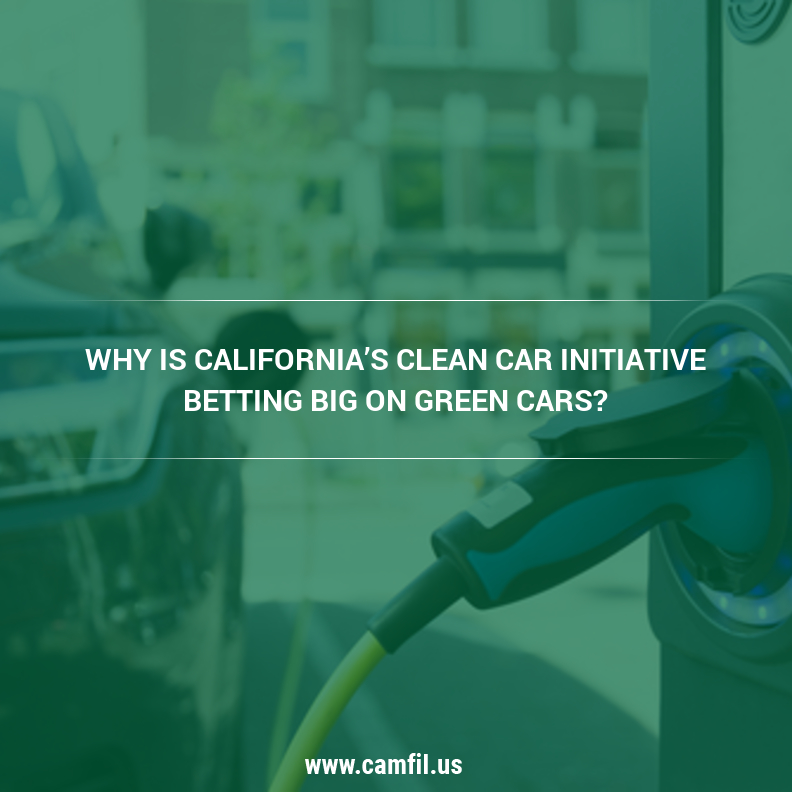Learn why California is betting big on green cars as part of an effort to ease dependence on commercial air filtration systems in preserving indoor air quality.
As the list of cities around the world turning to commercial air filtration systems to protect air quality inside homes and buildings continues to grow, a number of city governments are taking it upon themselves to reduce air pollution emissions from their very source.
California’s Push for Clean Cars May Ease Burden on Commercial Air Filtration Systems
Earlier this year, Mary Nichols, California’s top air quality regulator, refused to back down on pursuing the state’s clean car initiative despite threats of intervention by the federal government.
Nichols, who believes California’s vehicle standards may soon serve as the blueprint of the country’s federal standards, responded to then-EPA Administrator Scott Pruitt’s comments signaling his skepticism about states like California leading the charge against climate change. Pruitt’s comments even hinting that the EPA may rescind a state waiver under the Clean Air Act that allows California to enforce emissions standards for cars and trucks that were stricter than those of the federal government.
Pruitt’s comments were controversial, to say the least, as no EPA administrator has ever sought to revoke an existing waiver, not to mention the Clean Air Act doesn’t even use any language suggesting if it can be done.
Why Clean Car Standards Are So Important to Outdoor and Indoor Air Quality
California has long struggled with improving its outdoor and indoor air quality. According to the American Lung Association’s (ALA) ‘State of the Air’ report, eight out of the 10 cities with the worst air pollution are in California: Los Angeles, Bakersfield, Visalia, Fresno, Sacramento, San Diego, Modesto, and Redding.
California’s air pollution woes are caused by high vehicle traffic and severe traffic congestion on major roads—a chronic problem in Los Angeles-Long Beach, which suffers from the country’s worst ozone pollution. Ozone is a key component of smog.
And all that air pollution can make its way inside homes and buildings.
“Internal combustion engines can be a source of indoor air pollution in offices, schools, hospitals, hotels, shopping centers and stores especially where garages are attached,” explains Camfil USA’s Charlie Seyffer, Manager of Marketing & Technical Materials for commercial air filters and 37-year ASHRAE member and active committee participant. “In large cities with a high number of vehicles present, the ambient air is normally containing a high number of particles and gases.”
Commercial High Efficiency Air Filters Playing a Critical Role in LA
In 2017, Los Angeles Mayor Eric Garcetti ordered building inspectors in the city to ensure that homes and buildings near freeways were outfitted with proper-strength air filtration systems like commercial high efficiency air filters. This change came after reports that areas near major roads, which saw traffic jams, showed the worst levels of pollution, specifically particulate matter (PM) and ozone—two major components of car exhaust.
Problems like these are precisely why California is adamant about pushing forward with its clean car initiative. In February 2018, Governor Brown signed an executive order calling for five million electric vehicles to be put on California’s roads by 2030 and dedicating $1.25 billion in cap-and-trade proceeds to reducing vehicle emission to improve public health.
Health Effects of Pollutants Removed by Home Air Purifiers
The ALA’s report on air pollution in California revealed that the two dominant types of pollutants found in the atmosphere are ozone and particle pollution, which is also known as particulate matter. The good news is that proper-strength home air purifiers can remove both pollutants, specifically, a combination of high efficiency filters and molecular filtration solutions
- Particulate matter – PM refers to liquid droplets and solid particles that are carried by the airstream. PM2.5, or particles smaller than 2.5 microns in diameter, is particularly dangerous as these are small enough to be inhaled and end up in the deepest parts of the lungs. PM typically comes from car exhaust, forming around tailpipes as soot.
- Ozone – On the other hand, ozone is a naturally occurring gas molecule. But at high levels, it can lead to the formation of toxic smog, which can damage lung tissue when inhaled, not to mention cause acid rain.
Why Home Air Filtration Systems Are Necessary
When confronted by the problem of air pollution, most people think that the best solution is to stay indoors as much as possible and keep the doors and windows closed. The problem with this approach is that dirty air from the outside can still make its way inside homes and buildings through gaps on windows and doors, as well as cracks on the walls and ceiling. It’s for this reason that the EPA recommends that use of home high efficiency air filtration systems, particularly in homes and buildings near air pollution hotspots—freeways, industrial zones, and places with high construction activities.
Work with a Trusted Provider of Home Air Purification Systems
When seeking home air purification systems, it’s important to work with a trusted air filter manufacturer, one who can come in and provide the best solution for the specific air quality problem at hand. At Camfil USA, we have more than 50 years of experience protecting homes and buildings from the health effects of air pollution. Get in touch with our team to learn more about our air filtration solutions, or explore our catalog of home air filters to learn more about our product line.
Media Contact
Camfil USA Air Filters
Lynne Laake
T: 888.599.6620
F: Friend Camfil USA on Facebook
T: Follow Camfil USA on Twitter
Y: Watch Camfil Videos on YouTube
Source:
The post Why Is California’s Clean Car Initiative Betting Big on Green Cars? appeared first on Air Filters for Clean Air.

